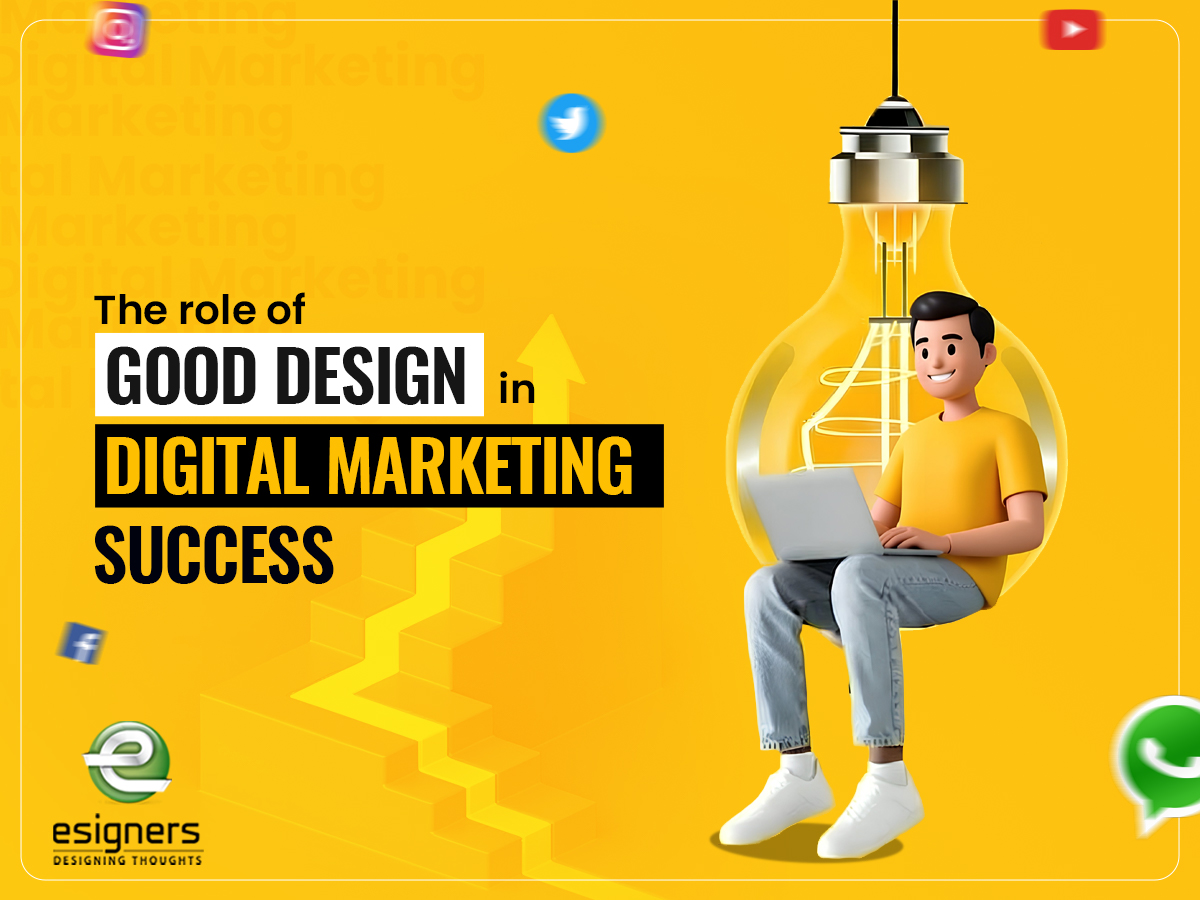Blog
The role of good design in digital marketing success

October 22nd, 2025 by esigners
Capturing and holding your audience’s attention is tougher than ever in today’s digital-first world. Regardless of your business size, you must compete fiercely to engage users in just a few seconds. Good design has become a major differentiator in this crowded online space. No longer is it only about aesthetics – communication, brand credibility, and user experience are important in this context as well.
Here are the key reasons—making strong first impressions, enhancing user experience, strengthening brand identity, increasing engagement, boosting conversions, improving content clarity, building trust, and enabling data-driven optimization—why good design is central to digital marketing success.
Making the best first impression
In the sphere of digital marketing, it takes only a few seconds to make the first impression. Research has shown that users often decide whether they want to leave a website or stay on it in just 30 seconds. One of the biggest factors influencing such decisions is the design.
If the design is clean and visually appealing, it instantly communicates trust and professionalism. It can be a website, a social media ad, a landing page, or an email campaign. The layout, fonts, colors, and imagery can all contribute to the way your brand is perceived.
If the interface is designed poorly, on the contrary, it can make even the best offer or product seem outdated and/or unreliable.
Enhancing UX
There is more to good design than just looking attractive. You have to create an enjoyable and seamless experience for the users. If users find it easy to navigate your ad or website, they will be able to find what they came looking for without any problem at all.
UX has a direct connection with conversion rates in the domain of digital marketing. For instance, if visitors find it hard to locate the CTA button and/or if your landing page loads slowly, they will quickly go away from the page.
On the contrary, if the interface is well designed and intuitive, it will encourage users to explore more, engage longer, and take the actions you want them to, like buying something from you or signing up.
Strengthening brand identity
The design elements that define your brand, like logo, fonts, colors, and imagery, form the visual basis of your identity. If you are consistent in your design, it helps build trust and recognition over time.
Whenever your audience sees a social media post, a website banner, or an email, they should be able to associate it straight away with your brand. A cohesive and strong visual identity can make your business memorable and also distinguish it from its competitors.
Increasing engagement on digital platforms
When it comes to online advertising and social media, visual content is the supreme factor. Posts, ads, and stories that feature compelling visuals get a lot more engagement than those that have only text. When users are scrolling through their feed, they will be attracted by a well-designed video or graphic. Design has a direct correlation with various engagement metrics.
Boosting conversion rates
The ultimate goal of digital marketing is conversion, where you turn visitors into customers or leads. Good design does indeed play a vital role in helping you achieve that goal.
Enhancing content impact and readability
It does not matter how good your content is – if the design is poor, it will not be effective at all. You can keep users engaged and make your content more readable by using proper typography, color contrast, and spacing.
Building credibility and trust
Users associate reliability with professional design, and they do so subconsciously. So, if your ad or website looks polished, users will automatically assume that your services or products are of a high quality as well. In the same way, if the page is designed poorly, it will lead to doubts regarding your legitimacy.
Supporting data-driven optimization
Modern digital design is not just creative – it is strategic as well. These days, you have tools such as heatmaps, analytics, and A/B testing that you can use as a marketer to test various designs and see which one performs the best.
In the domain of digital marketing, design is not limited to decoration. It has become a strategic asset. It can help you construct a brand identity and improve UX. It can also help you drive conversions and engagements. In a nutshell, each visual element contributes to your marketing success.
